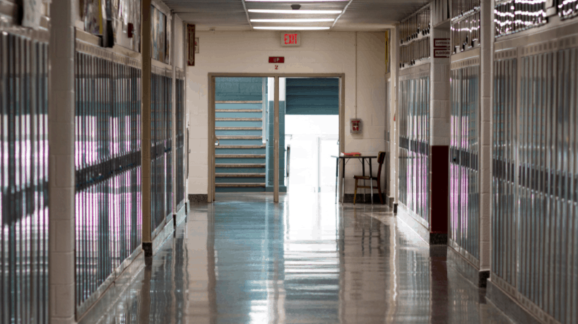How Trump Can Help Reopen America’s Schools
It’s almost the middle of August, and many parents still have little idea if their kids will be able to go to school in a few weeks. If schools are unable to reopen, it will be one of the worst blows of the COVID-19 pandemic yet. A large part of the labor force with young children at home and no access to child care will be unable to return to work, just as the pandemic’s bonus unemployment benefits start running out. Millions of temporary business closures will become permanent. And children will be affected in all sorts of ways, from stunted educational growth to food insecurity, with disadvantaged and minority children particularly hard hit.
These consequences of schools remaining closed are detailed on the website of the Centers for Disease Control, which has several pages of guidance for parents, teachers, and school administrators. But we still don’t have a national policy on schools reopening, and we need one fast. The president is strongly encouraging schools to reopen on time. While the federal government has no power to regulate when local school districts open and close, a national standard is needed that takes account of what we know about how COVID-19 affects different age groups and where COVID-19 has spread.
Who is at risk from COVID-19COVID-19 is most severe and most likely to result in death in the elderly and in people with other medical conditions. Unlike seasonal influenza, which primarily kills the very old and very young, or the catastrophic 1918–20 influenza pandemic that was especially lethal among young adults — half of deaths were in the 20–40 age group — CDC data show that 80 percent of COVID-19 deaths in the U.S. have been of people 65 and older and that 92 percent of all U.S. deaths have been of people 55 and older. The average number of comorbidities among people who have died is 2.5.
As of July 29, the CDC reports only 244 COVID-19 deaths nationwide among those age 24 and younger. That is less than 0.2 percent of all COVID-19 deaths, and nearly all the deaths have been in the 15–24 age group. Many had associated comorbidities such as obesity. Among elementary-school-age children (5–14 years old), there have been only 19 deaths in the whole country.
Likewise, the cumulative COVID-19-associated hospitalization rate per 100,000 population is 130.1 overall but heavily concentrated among the elderly — 360.2 per 100,000 in the 65-and-over group and 196.3 in the 50–64 age group. There have been only 6.4 COVID-19 hospitalizations per 100,000 among those 5 to 17 years old.
Children may also be less likely to be infected with or spread the virus that causes COVID-19. The American Academy of Pediatrics (AAP) reports that “the preponderance of evidence indicates that children and adolescents are less likely to be symptomatic and less likely to have severe disease resulting from SARS-CoV-2 infection. In addition, children may be less likely to become infected and to spread infection.”
Read the full article at National Review.
